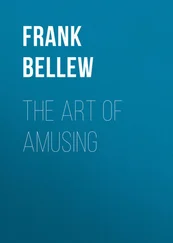Frank Abagnale - The Art of the Steal
Здесь есть возможность читать онлайн «Frank Abagnale - The Art of the Steal» весь текст электронной книги совершенно бесплатно (целиком полную версию без сокращений). В некоторых случаях можно слушать аудио, скачать через торрент в формате fb2 и присутствует краткое содержание. Год выпуска: 2001, ISBN: 2001, Издательство: Broadway Books, Жанр: Старинная литература, на английском языке. Описание произведения, (предисловие) а так же отзывы посетителей доступны на портале библиотеки ЛибКат.
- Название:The Art of the Steal
- Автор:
- Издательство:Broadway Books
- Жанр:
- Год:2001
- ISBN:9780767910910
- Рейтинг книги:4 / 5. Голосов: 1
-
Избранное:Добавить в избранное
- Отзывы:
-
Ваша оценка:
- 80
- 1
- 2
- 3
- 4
- 5
The Art of the Steal: краткое содержание, описание и аннотация
Предлагаем к чтению аннотацию, описание, краткое содержание или предисловие (зависит от того, что написал сам автор книги «The Art of the Steal»). Если вы не нашли необходимую информацию о книге — напишите в комментариях, мы постараемся отыскать её.
The Art of the Steal — читать онлайн бесплатно полную книгу (весь текст) целиком
Ниже представлен текст книги, разбитый по страницам. Система сохранения места последней прочитанной страницы, позволяет с удобством читать онлайн бесплатно книгу «The Art of the Steal», без необходимости каждый раз заново искать на чём Вы остановились. Поставьте закладку, и сможете в любой момент перейти на страницу, на которой закончили чтение.
Интервал:
Закладка:
Another gifting tree went by the name, “The Dinner Club.” This group was organized according to the four courses of a dinner party. Eight people known as appetizers filled the bottom row of the tree. They had to pay five thousand dollars apiece to the dessert person at the top of the tree, in order to be seated at the dinner party. As new people joined, the bottom rung advanced to the “soup and salad” level and on to the “entrée” rung before themselves becoming a “dessert”. If you became a “dessert”, meaning if enough people were suckered in to elevate you to that level, you were expected to receive $5,000 apiece from the latest crop of eight participants: $40,000. That’s a $35,000 profit on their original gift. Most people, though, never get to the top and lose all their money. The crooks, though, always arrange themselves in the tree so they ensure that they get their gifts.
When you examine the mathematics, a pyramid scheme looks awfully tantalizing. If you’re asked to send $10 to ten people, that’s $100 you’re out. But you add your name to the list of participants and get ten new people to join. They each send you $10, and you’re back to even. If each of those ten recruits ten additional people, then the next level of the pyramid has a hundred people. You collect $1,000. Another round produces a level of a thousand people. You get paid $10,000. The next level grows to ten thousand people. You collect $100,000. One more round brings you $1 million.
The trouble is that in order to perpetuate these pyramids, more and more people must be recruited to feed those at the upper levels. Once the supply runs out, the pyramid collapses and the people at the bottom are out their money.
And that’s why pyramids have to fail. The supply of people is not infinite. By the time one pyramid scheme reaches its eleventh level, assuming each new participant recruits ten new people, it will have exhausted the entire population of the planet. Plus, no new wealth is being created. Any money that one participant earns, another participant loses.
HANDICAPPING DEATH
The way a criminal thinks is, whenever something becomes popular as a legitimate investment is when it becomes a perfect candidate for an illegitimate investment. A case in point is what are known as viatical investments. The word viatical comes from the Latin viaticum, referring to the money and supplies given as traveling expenses to a Roman official when he departs on a journey. Viatical investments are, in essence, death futures.
A couple of decades ago, the idea was hatched of allowing terminally ill people a way to get money from their life insurance policies while they were still alive, to pay for needed medical expenses or to take one final vacation with loved ones. The way they work is that brokers arrange for investors to buy a certain percentage of the death benefits of the policies of the terminally ill, always leaving 20 percent or so for the estate. Someone given a year or two to live might have a $200,000 policy. For an investment of $100,000, investors might buy $150,000 of the face value. The ill person would get immediate cash and if he died soon, the investors would get a handsome return. How good a return, of course, depended on how well they managed to handicap death.
Policies that get viaticated are generally those of people diagnosed with AIDS, fatal cancers, and other catastrophic illnesses. It’s something of a ghoulish business, but investors look on it as helping a sick person. And, of course, there’s money to be made.
As recently as 1990, this was a small, arcane business, amounting to less than $100 million of viaticated policies. But it has grown to more than $1 billion. Consequently, criminals have taken notice and moved in, so much so that law enforcement authorities say viatical investment scams have become rampant, and rank among the top-ten investment frauds being perpetuated.
Viatical scams take different forms. Some are as blatant and straightforward as selling policies to investors on fictitious patients, or else selling legitimate policies over and over again. One viatical investment firm collected $115 million in investor money, but only $6 million was used to buy life insurance policies. The promoters found various other uses for the balance of the money. They bought twenty-five homes, thirty-four luxury cars, two helicopters, three motorcycles, and several boats.
Other viatical scams are more elaborate and cheat both the insurers and the investors. In these cases, scam artists recruit terminally ill people and help them obtain life insurance by lying on the applications about their condition. This process is known as “clean sheeting.” It doesn’t work with large policies, because medical exams and blood tests are required, but insurance companies skip those details with small policies.
These clean-sheeted policies are then immediately sold to investors. They’re also called “wet ink policies,” because the ink on the contract is barely dry when the policy is sold. Once the policyholders die, these policies are often contested as being fraudulently obtained, then canceled. Crooks in California obtained clean-sheeted policies amounting to more than $11 million before being caught.
Investors have been snapping up these policies. Thieves pitch them as a safe, high-return investment. And they add that the investor is engaging in a humanitarian act, providing desperately-needed funds to the terminally ill.
The truth of the matter is, even legitimate viatical investments are risky. Chronically ill people may live a lot longer than was estimated, cutting down on the yield to investors. New AIDS drugs and other medical breakthroughs work against your investment. In addition, many of these policies are term policies, and if the person outlives the term, there is no death benefit at all. An eighty-four-year-old California woman invested $85,000 in the hope of receiving $139,000 when a policyholder died. The expectation was that he would die within a year. Years later, he was still alive. He might outlive the woman.
WHAT TO CHECK
Given that you can lose money on these investments if they’re legitimate, imagine what it’s like to invest in a scam. There are some telltale signs to be aware of, though none are guarantees. Many legitimate viatical investments are themselves insured, but no viatical scam is, at least not with any real insurer. A legitimate investment will allow you to pay your money to a reputable escrow agent; a scam artist won’t. If it’s on the up and up, the purchase agreement should state that the insurance policy you’re investing in is past the period of contestability, generally two years from when it was issued. The best protection of all, though, is only to deal with a reputable and large viatical broker. And realize that you’re making a speculative investment no matter what.
THE MYTH OF THE INNER CIRCLE
There’s a natural inclination by people who don’t have a lot of money, to think that people who do have a lot are privy to investment opportunities that are closed to them. It wouldn’t surprise them to learn about clandestine securities peddled only to the rich, for suspicions about the government and financial institutions are widespread. Criminals are well aware of such suspicions, and exploit them with appalling consequences for investors.
In the little town of Mattoon, Illinois, population 18,500, a sixty-six-year-old retired electrician started an investment fund called the Omega Trust and Trading, which promised a fifty-to-one return. According to the fund’s literature, its head was an international banker who had worked for Fortune 500 companies (when investigators interviewed him, he couldn’t quite remember their names) and was one of a handful of people in the world who had the know-all and ability to conduct secret multimillion-dollar trades.
Читать дальшеИнтервал:
Закладка:
Похожие книги на «The Art of the Steal»
Представляем Вашему вниманию похожие книги на «The Art of the Steal» списком для выбора. Мы отобрали схожую по названию и смыслу литературу в надежде предоставить читателям больше вариантов отыскать новые, интересные, ещё непрочитанные произведения.
Обсуждение, отзывы о книге «The Art of the Steal» и просто собственные мнения читателей. Оставьте ваши комментарии, напишите, что Вы думаете о произведении, его смысле или главных героях. Укажите что конкретно понравилось, а что нет, и почему Вы так считаете.












